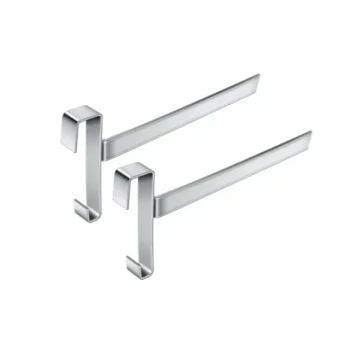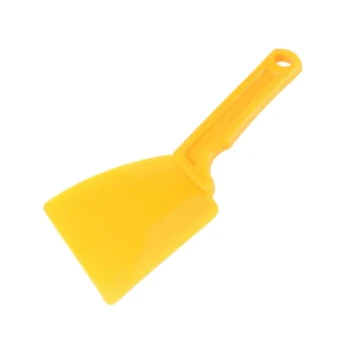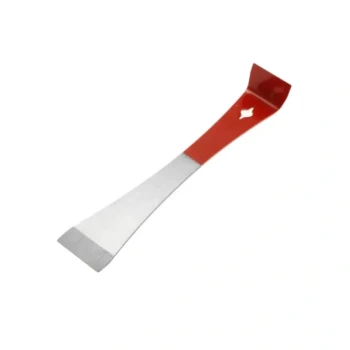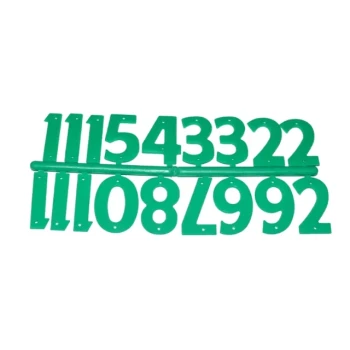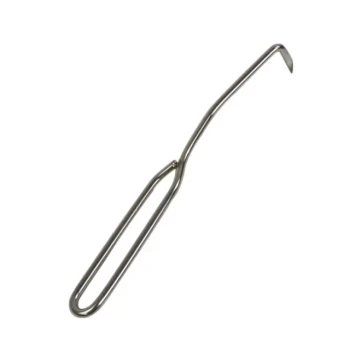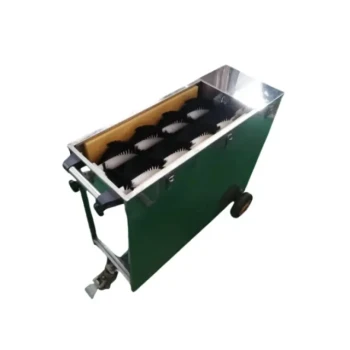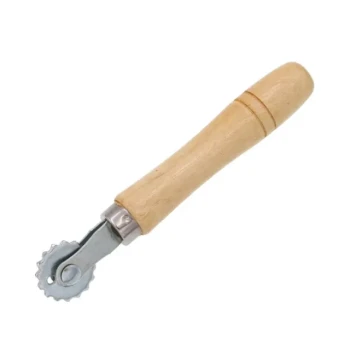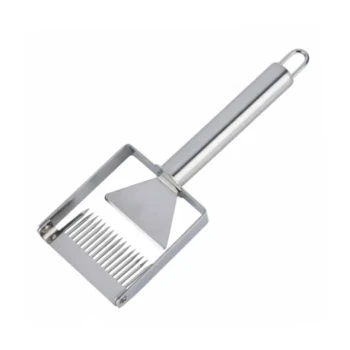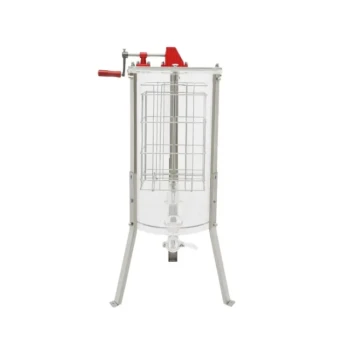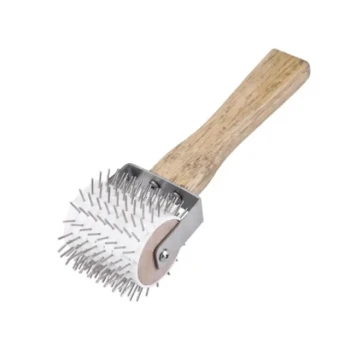In short, late summer is the most critical time to monitor Varroa mites because their populations often explode just as the bee population begins its natural decline. This creates a devastating imbalance that can doom a colony before winter, as mites target the vital "winter bees" that are essential for the colony's long-term survival.
The central challenge is a dangerous crossover: the mite population peaks while the bee population shrinks. Monitoring in late summer isn't just about controlling pests; it's about protecting the specific generation of bees that must carry the colony through the winter.
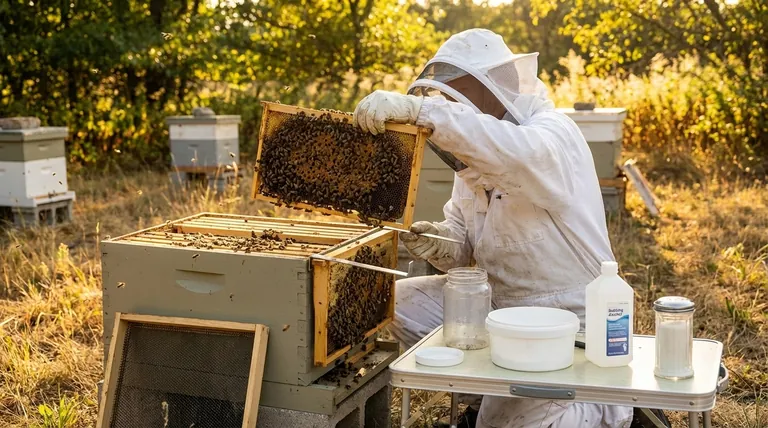
The Late-Summer Mite Explosion: A Perfect Storm
The health of a honey bee colony in the spring is determined by the actions you take in the late summer and early fall. This period is defined by a critical race against time between the bees and their most formidable parasite, the Varroa destructor mite.
The Mite Population's Exponential Growth
Throughout the spring and summer, the mite population reproduces under the capped brood, largely hidden from view. Each mite can produce several offspring, leading to an exponential growth curve that skyrockets in July and August.
The Bee Population's Natural Decline
Conversely, after the summer solstice, the queen bee naturally slows her egg-laying rate. This means the overall worker bee population, which has a short lifespan of about six weeks, begins to shrink as the colony prepares for winter.
The Critical Crossover Point
Late summer is when these two opposing trends collide. The rapidly increasing mite population places immense pressure on a dwindling bee population. This is the moment a seemingly strong hive can quickly become overwhelmed and collapse.
Key Factors That Amplify the Threat
Several beekeeping realities make the late summer period uniquely dangerous and elevate the need for vigilant monitoring.
Limited Treatment Windows
Many of the most effective mite treatments cannot be used when honey supers are on the hive, as they could contaminate the honey intended for human consumption. This often creates a treatment-free period during peak summer, allowing mites to multiply unchecked.
The Hidden Infestation
At any given time, the majority of Varroa mites are reproducing within the capped brood cells. This means a simple visual inspection of adult bees can be dangerously misleading, masking the true scale of the infestation brewing within the hive.
Mite "Robbing" and Reinfestation
Late summer is often a time of nectar dearth, which can trigger "robbing" behavior where bees from strong hives steal resources from weaker ones. If a nearby untreated colony collapses, it becomes a "mite bomb," spreading its massive mite load to all surrounding healthy hives.
Why This Timing Threatens Winter Survival
The true danger of a late-summer mite infestation is not the immediate impact, but the catastrophic effect it has on the colony's ability to survive the winter.
The Importance of "Winter Bees"
Bees raised in late summer and early fall are physiologically different. They are "winter bees" (or diutinus bees) with higher fat body reserves, which allow them to live for many months instead of just a few weeks. These are the bees that will form the winter cluster and care for the queen until spring.
Mites Target and Weaken Winter Bees
Varroa mites feed on these crucial fat bodies. This feeding action not only weakens the bee directly but also transmits a host of deadly viruses, most notably Deformed Wing Virus (DWV). A winter bee that is weakened or riddled with viruses cannot fulfill its role.
The Point of No Return
By the time you see visible signs of a high mite load, such as bees with deformed wings, the damage is already done. The winter bee population has been fatally compromised, and even if you treat and kill every mite, the viruses they transmitted will likely still cause the colony to perish over the winter.
Making the Right Choice for Colony Survival
Vigilant monitoring in late summer is the single most important action you can take to ensure your colonies have a future. It allows you to intervene before the point of no return.
- If your primary focus is preventing winter losses: Conduct a mite count (e.g., alcohol wash or sugar roll) in August to get an accurate assessment and treat if necessary, ensuring your winter bees are born into a low-mite environment.
- If your primary focus is honey production: Plan your mite management strategy around your harvest schedule, so you are prepared to monitor and treat immediately after removing your honey supers.
- If your primary focus is responsible beekeeping: Proactive monitoring prevents your hives from becoming a source of infestation for your neighbors, protecting the health of the entire local bee population.
Ultimately, successful wintering begins in the summer, and accurate monitoring is the tool that makes it possible.
Summary Table:
| Key Aspect | Why It Matters in Late Summer |
|---|---|
| Mite Population | Grows exponentially, peaking in August. |
| Bee Population | Naturally declines as the queen slows egg-laying. |
| Critical Risk | High mite load weakens the vital 'winter bee' generation. |
| Best Action | Conduct an alcohol wash or sugar roll test in August. |
Protect Your Apiary's Future with HONESTBEE
Your late summer mite management strategy is the foundation for a healthy, productive spring. Equip your operation with the reliable, high-quality supplies needed for effective monitoring and treatment.
HONESTBEE supplies commercial apiaries and beekeeping equipment distributors with the essential tools for success, including:
- Mite Monitoring Kits for accurate, timely assessments.
- Effective Treatments to use post-harvest, safeguarding your honey.
- Durable Equipment built to support the rigorous demands of professional beekeeping.
Don't let a hidden mite infestation jeopardize your winter survival rates. Contact our expert team today to discuss your wholesale needs and ensure your colonies are protected.
Get in Touch for Wholesale Pricing & Support
Visual Guide
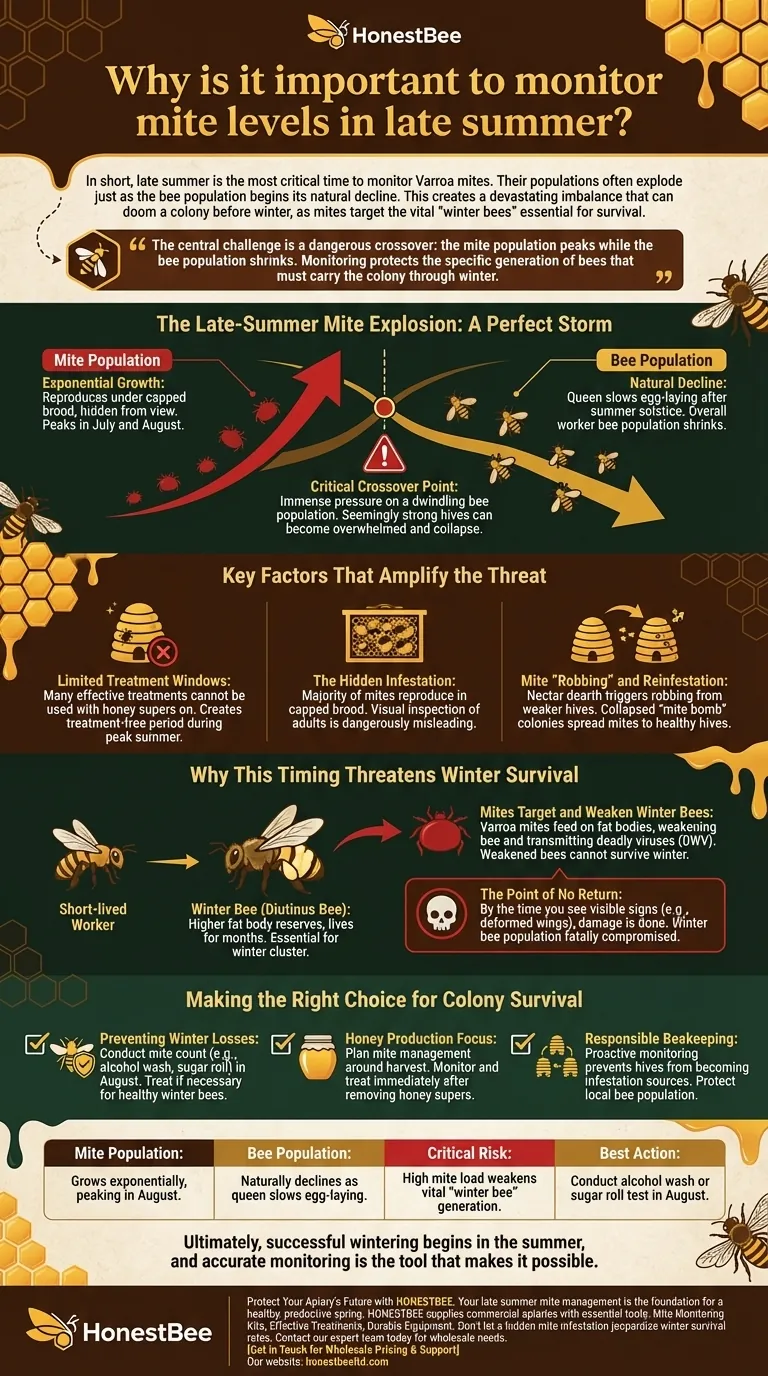
Related Products
- Heavy-Duty T-Style Frame Perch
- Professional Honey Scraper for Efficient Apiary Maintenance
- Professional Steel Pry-Bar Hive Tool with Painted Grip
- Professional Frame Comb Fork and Lifter for Efficient Handling
- Professional Large-Format Hive Number Set for Beekeeping
People Also Ask
- Why is a frame perch considered essential in an apiary? Ensure Hive Safety & Inspection Efficiency
- What are the main parts of a hive frame? A Guide to Modern Hive Anatomy
- How does the frame perch ensure stability during use? Secure Your Hive Inspections with Physics-Driven Design
- Why is responsible beekeeping important for new beekeepers? Build a Thriving Apiary from the Start
- What is the purpose of the beehive frame perch? Improve Hive Inspection Safety & Efficiency
